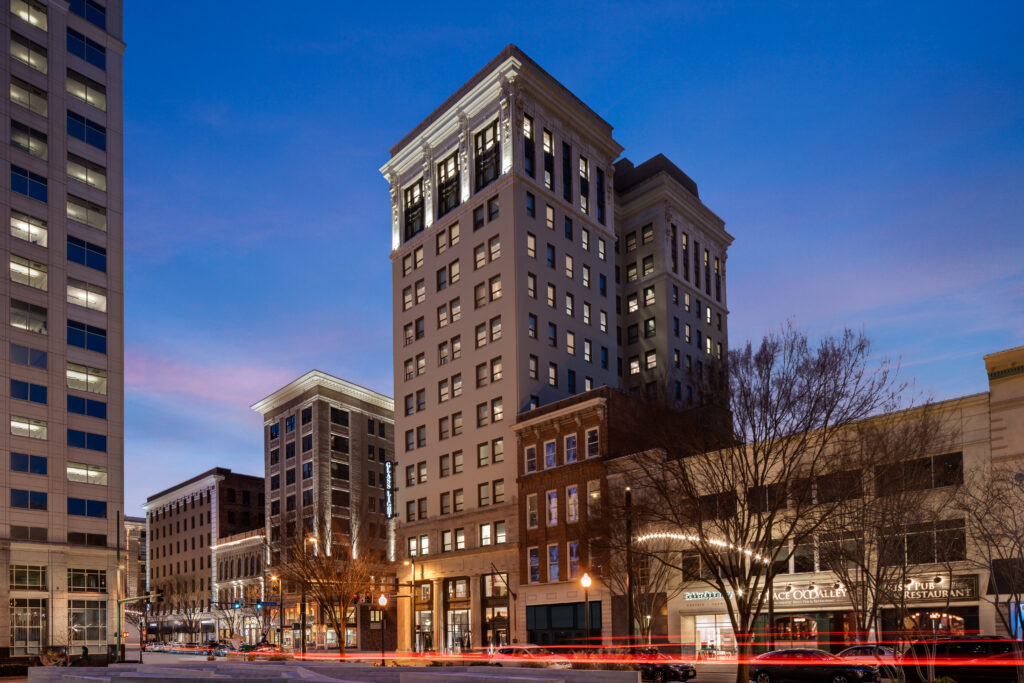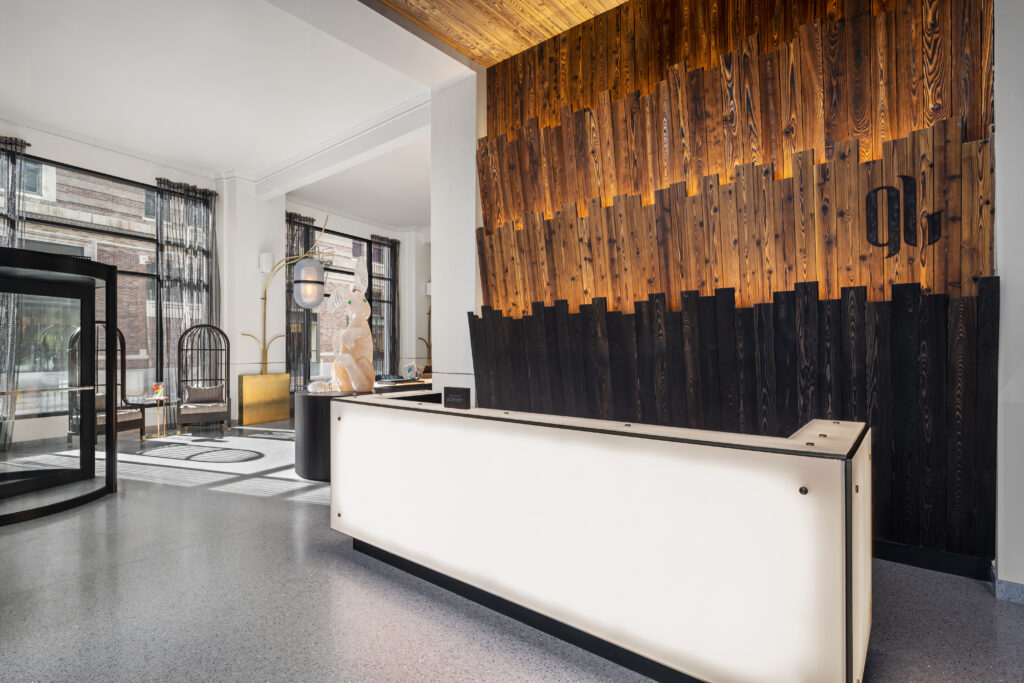
Hotel lobby art — when it’s bad, it can be good (in that bad sort of way). But, when it’s great, it’s transcendent, which should be a goal of any hotel. The Glass Light Hotel and Gallery in Norfolk falls into the latter category, so named for the collection of Doug and Pat Perry, local arts patrons who purchased a 1912 office building that Baskervill transformed into a glass menagerie, now operated by Marriott’s Autograph Collection.
There are 61 pieces of glass art in the public areas of the hotel, guarded by two giant glass rabbits by Dutch artist Peter Bremers who worked with Lhotsky Studio in the Czech Republic. (Bremers shipped them in pieces and glued them together in situ to create what are effectively the hotel’s mascots.) The glass fixtures, sculptures, vases, and sconces aren’t showcased so much as they are integral to the environmental experience of the hotel itself.
“The narrative in the design brief is to celebrate glass, as well as the craft and the final object of glass, itself,” says David Wilbourne, AIA, Studio Director for Baskervill’s hospitality division, “and the goal of the project was to make glass accessible and give guests a singular experience that no other hotel does like this one.”

Celebrating glass is one thing, but lighting it is another. Wilbourne and his team designed the hotel within the envelope of a 110-year-old building that was never intended to be a hotel, and designed the interior spaces around a collection that was both fragile and fickle. Standard windows are opaque or transparent depending on the conditions; break a pane, replace a pane. Art glass can be opaque and transparent at the same time, requiring careful consideration of lighting position, sources, and intensity. Uplight, downlight, and everything in between is vital for the art and consequential for the positioning of interior fittings and fixtures for the space.
“When you walk around the pieces in the lobby, says Wilbourne, “their properties change as the light hits them, so interior lighting was a huge part of this process. And, that’s the thing about lighting glass sculptures — if you light them wrong, it’s obvious.”

Above the lobby, Baskervill’s challenge was contextual in a different way: Retrofitting a 14-story headquarters for a fertilizer company into a boutique hotel that includes 113 bathrooms and new egress stairs, nevermind the accoutrements of fine hoteling. Best laid plans, permitting, and jurisdictional negotiations got Wilbourne and his team to the starting line, but contending with original architectural details only revealed during construction made the finish line seem at times uncertain.
“Virtually every room layout is different, and we have about 35 room types owing to the building’s qualities,” reports Wilbourne, “but in the end, it comes back to the glass and light is something I think differently about now after designing this project.”
About the author
William Richards is a writer and editorial consultant based in Washington, D.C. From 2007 to 2011, he was the Editor-in-Chief of Inform Magazine.
